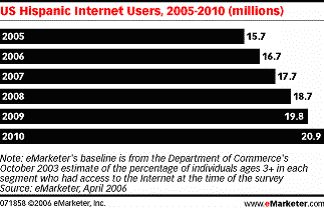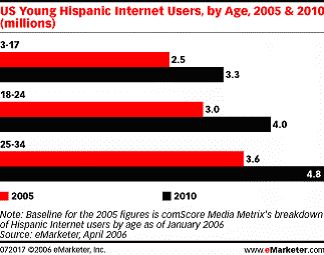Popular product Websites
by Med Ad News Staff
Prescription product Websites have become destinations for the increasing number of consumers and physicians who use the Internet as a resource for health information. Offline advertisements have helped drive this traffic.
The most popular product Websites are drawing about 2 million visitors annually, and often generate several times the number of responses that an 800-number call center would receive, according to Manhattan Research (manhattanresearch.com). These Websites include ones for cholesterol-reducing drug Lipitor, respiratory product Allegra, psychotherapeutic medicine Zoloft, gastrointestinal drug Nexium, psychotherapeutic product Wellbutrin, sleep-disorder medicine Ambien, and erectile-dysfunction product Viagra. Pfizer Inc. (pfizer.com) markets Lipitor, Zoloft, and Viagra. Sanofi-Aventis (sanofi-aventis.com) markets Allegra and Ambien. AstraZeneca (astrazeneca.com) markets Nexium. GlaxoSmithKline (gsk.com) markets Wellbutrin.
These Websites are becoming more popular as consumers and physicians increasingly rely on search engines as a primary means of locating health information online and are using broadband to access more advanced media. Consumers were 30% more likely to begin their online health session with a search engine than by going directly to a known Website. In 2005, for the first time, more consumers used a broadband than a dial-up connection as the number of broadband connections increased 31%. As a result, consumers are spending more time online, and more than 61 million U.S. adults are participating in online video, blogs, or podcasts. The number of consumers using these sources is expected to grow by double digits in 2006.
Europe lags behind the United States in these trends. Despite the fact that most European physicians are online for more than five hours a week, they have not adopted more advanced professional activities in which U.S. physicians frequently engage. This situation may stem from a lack of offerings rather than a lack of interest.
European physicians are, however, using the Internet to find out information about pharmaceutical companies. According to Manhattan Research, the top corporate sites visited by European physicians are Pfizer, AstraZeneca, Novartis (novartis.com), GlaxoSmithKline, Johnson & Johnson (jnj.com), Sanofi-Aventis, Merck & Co. (merck.com), Roche (roche.com), Bayer (bayer.com), Eli Lilly and Co. (lilly.com), and Bristol-Myers Squibb Co. (bms.com). Although these results varied by country, 49% of European physicians who use the Internet for professional purposes have visited a corporate pharmaceutical site. Physicians are using the Internet to contact pharmaceutical companies directly. Fewer than 25% of European physicians report e-mailing with their patients, but nearly one-third of them report an e-mail relationship with a pharmaceutical company. This activity represents an opportunity for pharmaceutical marketers.
Total Internet use and professional activities conducted online are increasing among European physicians. About 86% of European physicians report having an Internet connection in their offices, and 84% use the Internet daily for some purpose. A majority of this time is spent on researching topics related to their job. Resources used in these endeavors are online journals, literature databases, clinical trial information, and prescription drug facts.
According to Manhattan Research, almost one in three European physicians has a hand-held mobile device. As devices evolve, the opportunity to use them while caring for a patient will increase.
Company looks to Latin America
Sanofi-Aventis signed a three-year software and services contract with Dendrite International Inc. to provide a sales-force management system for the company’s operations in Latin America, including Mexico, Central America, the Caribbean, Venezuela, Colombia, Ecuador, Peru, Chile, and Argentina. Company executives selected Dendrite in part because of its presence in these markets and its ability to offer products in local languages.
More than 2,900 Sanofi-Aventis sales representatives, district managers, and home office users in the region will deploy the Dendrite product, VisiForce, which will allow them to collect, analyze, and disseminate business data from multiple sources. VisiForce can be used on personal digital assistants and laptops. Dendrite executives say Latin America is an area that is growing more popular with their customers.
"We are pleased that one of our longest standing customers has chosen to expand its relationship with us," says Natasha Giordano, senior VP, global accounts, Dendrite (dendrite.com). "There is growing demand for solutions specific to Latin America, and Dendrite is at the forefront of providing solutions that meet the needs of the region."
As part of the agreement, Dendrite will provide Sanofi-Aventis (sanofi-aventis.com) with deployment and implementation services, help desk and data center services, customer operations and account management services, and hardware and asset management support.
Patient friendly Actemra Website
Chugai Pharmaceutical Co. has made the Website for Actemra more user friendly and easier to understand in response to a trend toward more patient-oriented medicine. The Website can enable patients to make their own decisions, and allow health-care professionals to help them. Chugai officials say the Website could promote communication between patients and health-care professionals and contribute to improved patient compliance and the proper use of the product.
Actemra is composed of tocilizumab and was approved in Japan in April 2005 for the treatment of Castleman’s disease, a rare lymphoproliferative disease characterized by symptoms such as systemic lymphadenopathy, fever, general fatigue, weight loss, anemia, splenomegaly, and hepatomegaly. The information Website, actemra.jp, includes descriptions of the pathology and symptoms of Castleman’s disease in an outline, as well as product side effects and efficacy. A treatment reminder for patients and post-marketing surveillance facts for health-care professionals are provided.
Chugai officials chose to make an information Website for Actemra because the product is the first approved drug for Castleman’s disease. The population of patients is just about 100 who are refractory to conventional therapies and for whom surgical operations are not indicated. Chugai is collecting information on efficacy and safety with long-term use from all patients using Actemra. By updating the safety information obtained from post-marketing surveillance, Chugai officials expect to be able to disclose appropriate findings in a timely manner. Chugai is owned by Roche (roche.com).
Companies help fund IBD Website
Money from several pharmaceutical companies has enabled a nonprofit to launch a Website that provides information to patients and caregivers about inflammatory bowel disease. The Foundation for Clinical Research in Inflammatory Bowel Disease published the Website, myIBD.org. Abbott Laboratories, Centocor Inc., Procter & Gamble Pharmaceuticals, Salix Pharmaceuticals Inc., and Shire USA Pharmaceuticals Inc. provided unrestricted educational grants that fund myIBD.org.
Inflammatory bowel disease affects more than 1 million Americans, and is chronic, lifelong, and has no known cause or cure. The patient education section of myIBD.org includes an overview of inflammatory bowel disease and the medicines used to treat the disease.
Several of the products listed on myIBD.org are marketed by the companies funding the Website. These medicines are Asacol, which is marketed by Procter & Gamble (pg.com), Pentasa, which is marketed by Shire (shire.com), Colazal, which is marketed by Salix (salix.com), and Remicade, which is marketed by Centocor (centocor.com). Johnson & Johnson (jnj.com) owns Centocor. The Website mentions Humira, which is marketed by Abbott (abbott.com) and is in Phase III trials for the treatment of Crohn’s disease. Other products that appear on the Website are Neoral and Sandimmune, which are marketed by Novartis (novartis.com), Prograf, which is marketed by Astellas Pharma Inc. (astellas.com), Cipro, which is marketed by Schering-Plough Corp. (sgp.com), and Azulfidine, Deltasone, and Flagyl, which are marketed by Pfizer Inc. (pfizer.com).
In addition to descriptions of the medicines, the patient section of myIBD.org provides transcripts of the foundation’s Advances in Inflammatory Bowel Disease patient education programs and an "Ask the Specialist" section with answers to questions that inflammatory bowel disease patients and their caregivers may have. The site will include information about clinical trials and how patients can participate.
"We want patients and their caregivers to be able to access the best information available from the leading authorities on IBD," says Jane Present, co-founder and executive director, Foundation for Clinical Research in Inflammatory Bowel Disease (clinicalresearchinibd.org). "That’s why we worked with members of our scientific advisory committee, which includes IBD specialists and thought leaders from the country’s leading institutions, to develop the content for myIBD.org."
A section of the Website for clinicians contains opportunities available through the Foundation for Clinical Research in Inflammatory Bowel Disease. The foundation is trying to enhance the medications available to treat inflammatory bowel disease and encourage young gastroenterologists to pursue clinical careers in treating this condition.
Company upgrades sales software
Alliant Pharmaceuticals Inc. has selected Synergistix Data Solutions to provide automated sales systems for the pediatric specialty pharmaceutical company. Synergistix provides sales-force automation solutions within the pharmaceutical industry.
Alliant is using Synergistix’s (synergistixdata.com) Call Activity Tracking System for automating, managing, and monitoring its sales force to help the company comply with federal regulations. The Call Activity Tracking System allows sales representatives and managers to deal with issues arising from the Prescription Drug Marketing Act by capturing field-based data.
Sales representatives can use the software for managing contacts, planning calls, obtaining information on market share and prescribing habits, tracking calls and sample disbursement, and ordering. Managers receive Web-based reporting capabilities and daily management tools for monitoring sales activity.
Mark Pugh, president, Alliant (alliantpharma.com), says the software has helped the company’s sales force. "Productivity is vital for an organization like ours, and the CATS software has proven to be an effective support enabling our sales staff to increase the speed and overall productivity as they manage their day-to-day activities," Mr. Pugh says.


 McDonald's is using cell phone technology to promote its Tulsa, Okla.-area restaurants, whose up-to-the-minute bells and whistles include wireless Internet, cashless technology, and plasma-screen TVs. As part of the "Mobile Whoa" campaign, through the end of April, customers in northeastern Oklahoma can participate in a mobile scavenger hunt, get a mobile coupon and post photos in a camera phone and Web site picture gallery. The scavenger hunt starts when customers text-message a specific code or register online at
McDonald's is using cell phone technology to promote its Tulsa, Okla.-area restaurants, whose up-to-the-minute bells and whistles include wireless Internet, cashless technology, and plasma-screen TVs. As part of the "Mobile Whoa" campaign, through the end of April, customers in northeastern Oklahoma can participate in a mobile scavenger hunt, get a mobile coupon and post photos in a camera phone and Web site picture gallery. The scavenger hunt starts when customers text-message a specific code or register online at 




